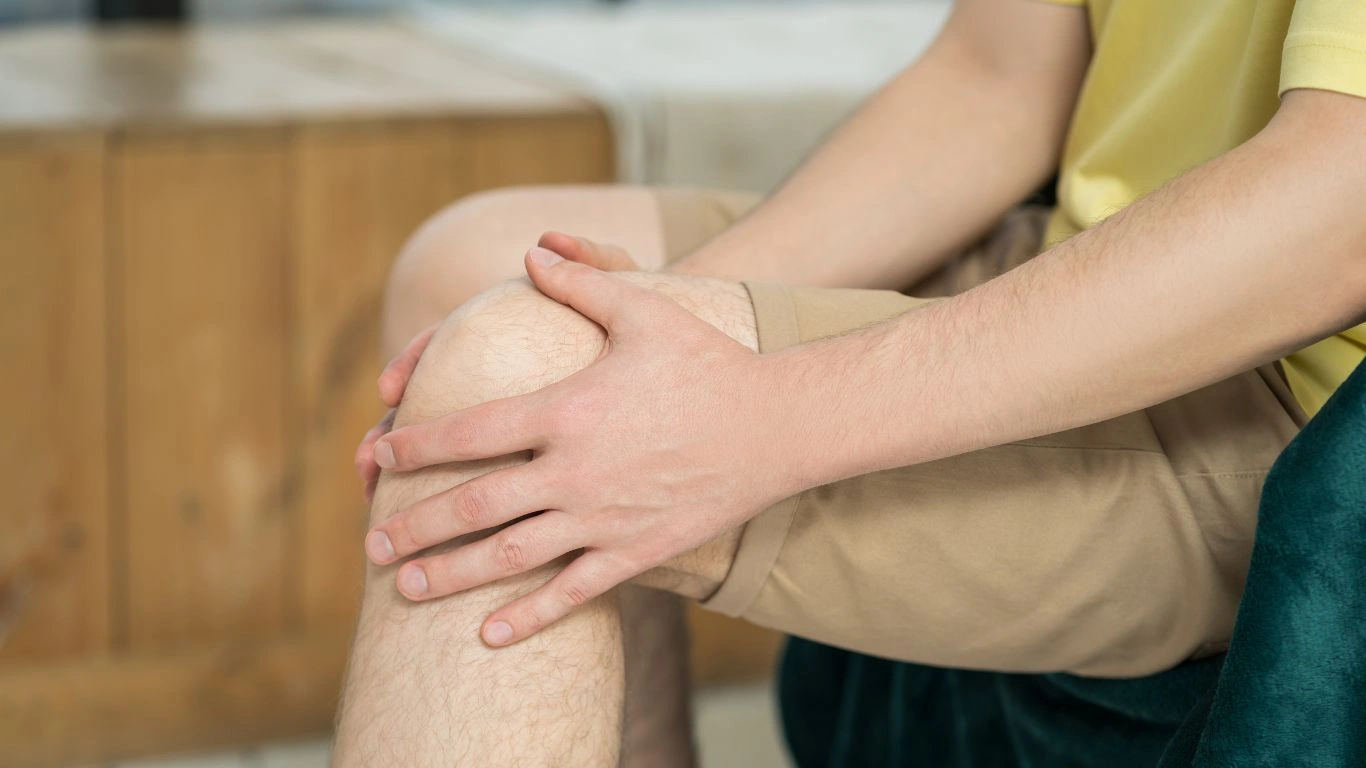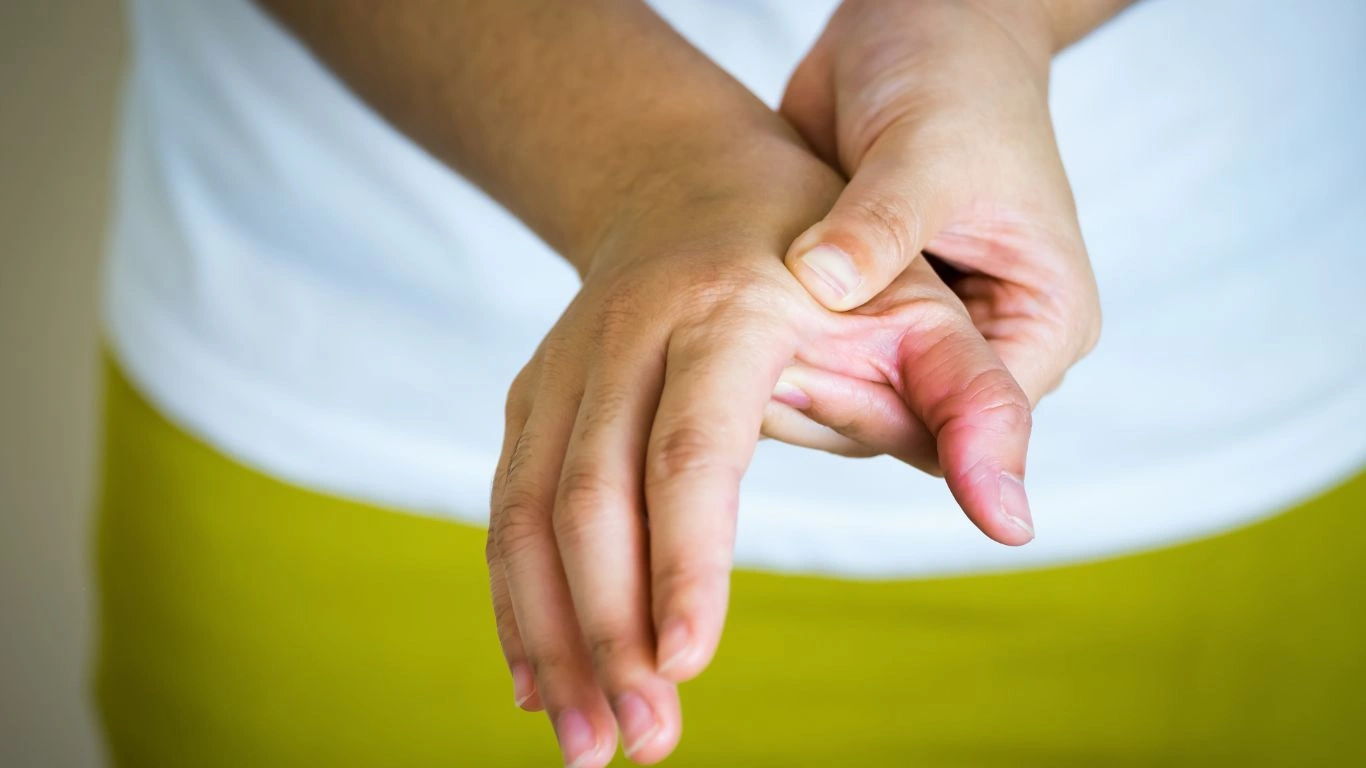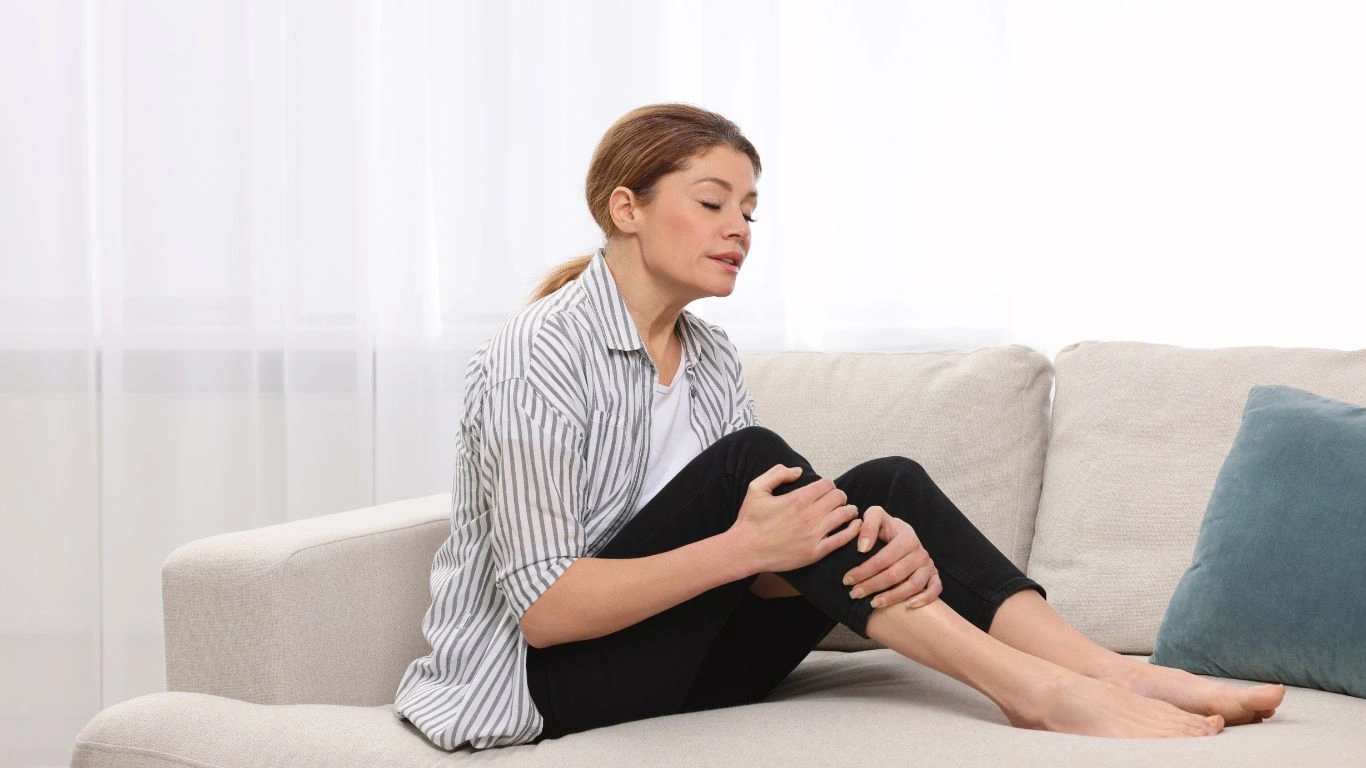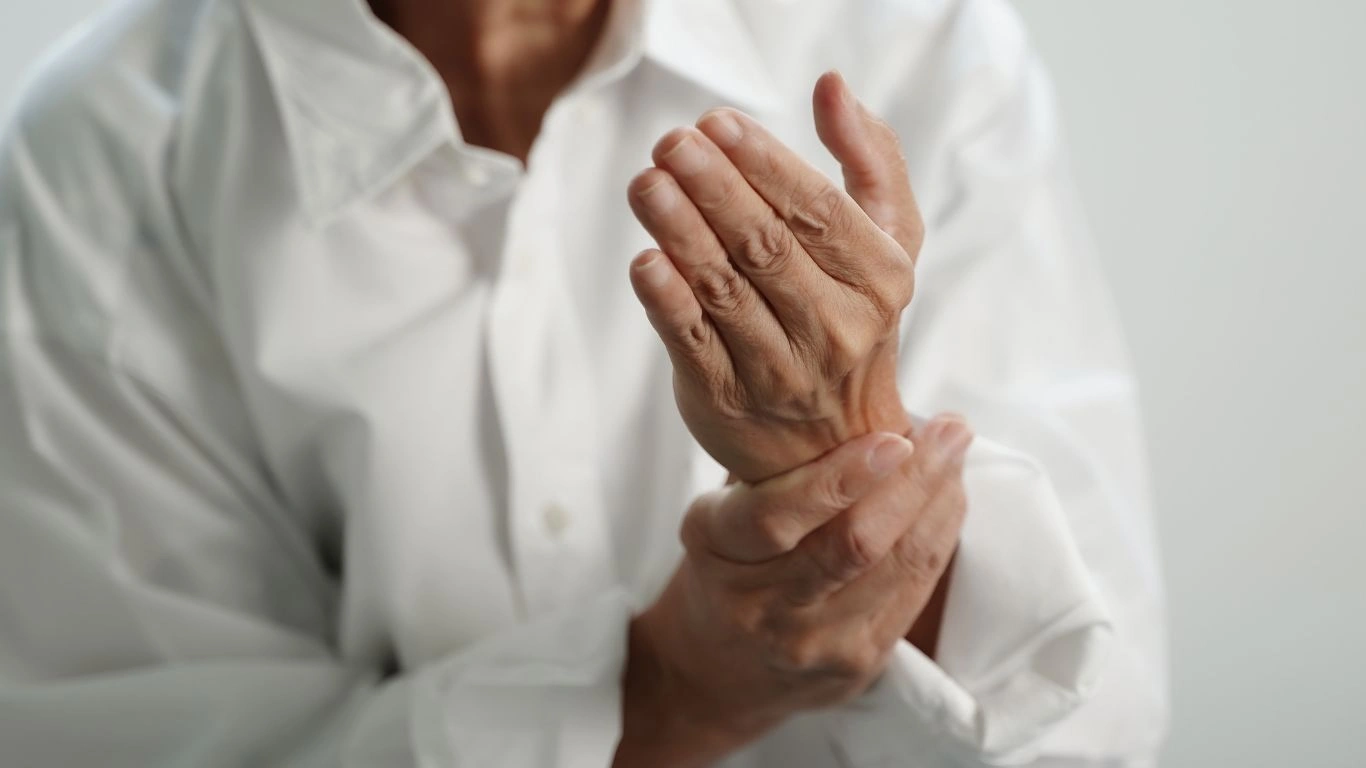How to Prevent Joint Stiffness in Rheumatoid Arthritis: Simple and Effective Tips
Rheumatoid arthritis (RA) can be a daily battle with joint stiffness, and it’s something I’ve seen firsthand as a Rheumatology Nurse Practitioner. It can be incredibly frustrating when your joints feel tight, sore, and downright immovable. As you may know, joint stiffness is one of the most common symptoms of RA, often making simple tasks feel like monumental challenges. But here’s the good news: there are ways to manage and even prevent that stiff, painful feeling. If you’re wondering how to prevent joint stiffness in rheumatoid arthritis, you’re in the right place. With a bit of consistency and the right approach, you can regain some control over your body and start moving with more ease.
Understanding Joint Stiffness in Rheumatoid Arthritis

Before diving into how to prevent joint stiffness in rheumatoid arthritis, it’s important to understand why it happens in the first place. RA is an autoimmune disease where your immune system mistakenly attacks the lining of your joints, causing inflammation. This inflammation leads to pain, swelling, and the stiffness that many of us are all too familiar with. Over time, if left unchecked, the inflammation can lead to joint damage and even deformities. And while medications play a major role in controlling RA, lifestyle changes and daily habits are also critical to minimizing stiffness.
The Role of Inflammation in Joint Stiffness
The inflammation caused by RA is what directly leads to joint stiffness. When the lining of your joints (called the synovium) becomes inflamed, it can make the movement of your joints feel restricted, often leading to a feeling of tightness or even a sensation that your joints are “locked.” I’ve had patients tell me they feel like their joints are frozen in place, and that’s not far from the truth. Inflammation interferes with your joint’s natural lubricating ability, which leads to that stiff, painful sensation. The goal of managing joint stiffness is, of course, to reduce this inflammation as much as possible.
How Lifestyle Changes Can Help Prevent Joint Stiffness

When it comes to preventing joint stiffness in rheumatoid arthritis, the good news is that you can take steps beyond medication. Small, consistent changes to your daily routine can make a huge difference. In fact, I’ve worked with so many patients who have significantly reduced their stiffness and improved their mobility by incorporating simple lifestyle adjustments. Here are a few key tips that have worked wonders for others:
- Stay Active: Exercise might be the last thing you feel like doing when your joints are swollen, but it’s one of the best ways to prevent stiffness. Regular, low-impact exercises such as walking, swimming, or cycling can help keep your joints moving, which in turn helps reduce that stiff feeling. Just be sure to start slow and listen to your body. It’s about consistency, not intensity.
- Stretching is Key: Gentle stretching exercises can make a world of difference. Stretching helps to improve flexibility and keep your joints from becoming tight and inflexible. I always recommend incorporating daily stretching into your routine, even if it’s just a few minutes. Think of it like giving your joints a little tune-up every day.
- Heat and Cold Therapy: Heat therapy can help relax muscles and ease the pain of joint stiffness, while cold therapy can reduce inflammation and numb sharp pain. I suggest alternating between hot and cold packs to find what works best for you.
- Maintaining a Healthy Weight: Extra weight puts additional stress on your joints, especially weight-bearing joints like the knees, hips, and spine. Maintaining a healthy weight can alleviate some of that pressure and reduce the likelihood of joint stiffness. A balanced diet can go a long way in helping with this.
Dietary Tips to Help Prevent Joint Stiffness

Your diet plays a crucial role in managing RA and preventing joint stiffness. What you eat directly impacts inflammation levels in the body. I’ve seen patients who’ve made simple dietary adjustments and felt a remarkable difference in their symptoms. Let’s talk about some of the foods you should consider incorporating into your meals, as well as those to avoid:
Anti-Inflammatory Foods
Some foods have natural anti-inflammatory properties that can help reduce joint stiffness in RA. Here are a few that I recommend often:
- Fatty Fish: Fish like salmon, mackerel, and sardines are rich in omega-3 fatty acids, which are known to reduce inflammation in the body. Adding these to your diet a few times a week can make a difference.
- Berries: Blueberries, strawberries, and raspberries are packed with antioxidants that fight inflammation. A handful of berries in your breakfast or as a snack can be a tasty, anti-inflammatory treat.
- Leafy Greens: Kale, spinach, and broccoli are rich in vitamins and minerals that can help support overall joint health. Plus, they’re naturally low in calories, making them an easy addition to any meal.
- Nuts and Seeds: Walnuts, flaxseeds, and chia seeds are all great sources of omega-3s. Toss them into smoothies or salads for an extra anti-inflammatory boost.
Foods to Avoid
On the flip side, some foods can actually increase inflammation in the body. These are the ones you’ll want to keep to a minimum:
- Processed Foods: Packaged snacks, fast food, and sugary treats can all contribute to inflammation. I always tell my patients to stick to whole, natural foods as much as possible.
- Refined Carbs: White bread, pastries, and pasta can spike your blood sugar and increase inflammation. Opt for whole grains instead.
- Fried Foods: Foods fried in unhealthy oils can contribute to joint stiffness. Aim for healthier cooking methods like grilling, steaming, or baking.
By incorporating more anti-inflammatory foods into your diet and cutting back on the inflammatory ones, you’re giving your body the support it needs to fight off that annoying joint stiffness. Remember, diet alone won’t solve everything, but it’s an important piece of the puzzle when it comes to managing rheumatoid arthritis.
Incorporating Rest and Sleep for Joint Health

When managing joint stiffness in rheumatoid arthritis, rest isn’t just a luxury – it’s essential. I can’t tell you how many times I’ve seen patients struggle with RA because they push themselves too hard, thinking they just need to “tough it out.” But your body needs rest to heal and rejuvenate, especially when it’s dealing with the constant inflammation that comes with RA. So, let’s break down how rest and sleep can directly help prevent stiffness in your joints.
The Healing Power of Sleep
If you’re like me, you know how tough it can be to get a good night’s sleep when you’re dealing with pain and stiffness. But sleep is one of the most powerful tools in the fight against RA. In fact, when we sleep, our bodies enter a recovery phase where inflammation is reduced, and cell repair happens. Skimping on sleep can hinder that process and even make joint stiffness worse. In my practice, I always stress the importance of getting quality sleep—at least 7-9 hours per night if possible. And while that may sound easier said than done, a few sleep hygiene practices can help make it more achievable.
- Establish a Sleep Routine: Going to bed and waking up at the same time every day can help regulate your body’s natural sleep-wake cycle. Try to make your sleep routine consistent, even on weekends.
- Create a Relaxing Environment: Keep your bedroom cool, dark, and quiet. Consider using a white noise machine or earplugs if noise is an issue. A comfortable mattress and pillow that support your neck and spine can make a big difference too.
- Avoid Stimulants: Things like caffeine, nicotine, and even heavy meals close to bedtime can interfere with your ability to fall asleep. Try cutting these out a few hours before bed to ensure you get the most restful sleep possible.
The Role of Rest During Flare-Ups
Sometimes, when RA flares up, all you want to do is lie down and rest. And that’s okay. In fact, I encourage it. When joints are inflamed and painful, rest helps to reduce the pressure and give your body the space it needs to recover. Just remember that rest doesn’t mean complete immobility. Gentle movements, like stretching or even light walking, can still be beneficial, but overexertion during a flare-up will only worsen stiffness. So, listen to your body and pace yourself when the symptoms hit.
Physical Therapy and Occupational Therapy: Your Allies in Prevention

As a Rheumatology Nurse Practitioner, one of the most valuable recommendations I make to my patients is to see a physical therapist (PT) or an occupational therapist (OT). These professionals can be real game-changers when it comes to preventing joint stiffness and improving function. Physical therapists specialize in designing exercise programs tailored to your needs, helping to strengthen muscles around your joints, which can reduce stiffness and prevent further damage. They also teach you proper techniques to avoid injury and strain on your joints, which is a huge help when you’re living with RA.
Physical Therapy Techniques
Physical therapy can help in a number of ways, from stretching to strengthening exercises. The goal is to enhance mobility, reduce stiffness, and improve your overall joint function. A good PT will develop an individualized program that addresses your specific needs and challenges. Some common techniques include:
- Range of Motion Exercises: These exercises focus on moving your joints through their full range of motion, which helps maintain flexibility and reduces stiffness.
- Strengthening Exercises: Strengthening the muscles around your affected joints helps support the joint and relieve some of the strain. It’s important to keep these exercises low-impact and gradual so you don’t exacerbate inflammation.
- Joint Protection Techniques: A PT will teach you ways to protect your joints from stress and damage during daily activities. This includes using assistive devices and modifying how you perform certain tasks.
Occupational Therapy: Practical Tips for Everyday Life
Occupational therapy is equally important in preventing joint stiffness. OT focuses on helping you maintain your ability to perform daily activities like cooking, dressing, and driving. They’ll assess your home and work environment to suggest modifications that can reduce strain on your joints. For example, using tools with ergonomic handles or placing objects in easier-to-reach locations can help make daily tasks more manageable. An OT can also recommend joint protection techniques to avoid overuse and reduce fatigue. Together with PT, OT can give you the tools to live a more functional and less painful life with RA.
Medications: The Foundation of RA Management

Of course, while lifestyle changes, rest, and therapy are incredibly important, medications remain the cornerstone of managing rheumatoid arthritis and preventing joint stiffness. In my practice, I’ve seen patients experience huge improvements when they combine the right medications with healthy habits. Medications work by targeting the inflammation at its source, helping to reduce swelling and stiffness in your joints. But it’s important to work closely with your healthcare provider to find the best treatment plan for your specific needs.
Common Medications for RA
There are several different classes of medications used to treat RA, and they all work in different ways. Some are designed to relieve symptoms, while others aim to slow the progression of the disease and protect the joints. Here’s a brief overview of the most common medications used in RA management:
- Nonsteroidal Anti-Inflammatory Drugs (NSAIDs): Medications like ibuprofen or naproxen can help reduce inflammation and pain, providing short-term relief from joint stiffness.
- Disease-Modifying Antirheumatic Drugs (DMARDs): DMARDs, like methotrexate, are used to slow the progression of RA and prevent joint damage. These drugs target the immune system to reduce inflammation and prevent joint stiffness from worsening.
- Biologics: Biologic drugs are a newer class of medications that target specific parts of the immune system that contribute to inflammation. These are often prescribed when traditional DMARDs aren’t effective on their own.
- Corticosteroids: These medications, such as prednisone, are powerful anti-inflammatory drugs that can provide quick relief during flare-ups, although they’re typically used for short periods due to potential side effects.
While medications are essential for managing RA, they should be seen as part of a holistic approach that includes lifestyle changes, therapy, and self-care. Combining these strategies can help you maintain your mobility, reduce joint stiffness, and lead a fuller, more active life despite your diagnosis.
Incorporating Mindfulness and Stress Reduction Techniques

Rheumatoid arthritis isn’t just a physical condition – it can take a toll on your mental and emotional well-being too. As a nurse practitioner who’s seen the mental strain that RA can cause, I can tell you that managing stress is just as important as managing the physical symptoms. Stress is a known trigger for inflammation, and when we’re stressed, our body’s immune response can worsen. This can make joint stiffness and pain flare up even more. That’s why incorporating mindfulness and stress reduction techniques is essential in preventing joint stiffness and improving overall quality of life.
Understanding the Link Between Stress and RA Symptoms
There’s a growing body of research suggesting that stress can increase inflammation in the body, and when it comes to RA, that’s a big deal. Stress activates the body’s “fight or flight” response, which can lead to the release of chemicals like cortisol. While cortisol can help in short bursts, prolonged levels of it can actually cause inflammation to rise, potentially worsening the stiffness and pain in your joints. The mind-body connection is powerful, and by learning to manage stress, you can play a major role in controlling your RA symptoms.
Mindfulness Techniques That Can Help
Mindfulness is all about being present in the moment and calming your mind, which can help reduce stress levels. Incorporating mindfulness into your routine doesn’t have to be complicated, and it doesn’t require a lot of time. Here are a few simple techniques that I’ve recommended to many of my patients over the years:
- Deep Breathing Exercises: Deep breathing is one of the easiest and most effective ways to calm the nervous system. Try taking a few minutes each day to practice deep, slow breaths. Inhale deeply through your nose, hold for a few seconds, and then exhale slowly through your mouth. This simple exercise can help reduce stress and promote relaxation.
- Progressive Muscle Relaxation (PMR): This technique involves tensing and then relaxing different muscle groups in the body, starting from your toes and working your way up to your head. It’s a great way to release built-up tension and promote overall relaxation.
- Meditation: Meditation can be a powerful tool in managing RA stress. You don’t have to meditate for hours—just a few minutes each day can help. Find a quiet space, close your eyes, and focus on your breathing. Allow yourself to let go of any negative thoughts or worries.
- Yoga: Gentle yoga, especially styles like Hatha or Restorative, can be incredibly beneficial for both the body and mind. Yoga not only improves flexibility and strength but also promotes mental clarity and relaxation. Even a short session can help reduce stress and improve your joint stiffness.
Support Systems and Building a Network

Living with rheumatoid arthritis can sometimes feel isolating, and it’s easy to feel like you’re the only one struggling. But trust me, you are not alone. Building a strong support network can be a crucial part of managing RA and preventing joint stiffness. In my experience, patients who have a support system in place tend to do better, both physically and mentally.
The Power of Peer Support
Whether it’s family, friends, or others living with RA, connecting with people who understand what you’re going through can make a world of difference. Support groups, whether in-person or online, can provide a safe space to share experiences, ask questions, and exchange coping strategies. I’ve heard from many of my patients that just talking to someone who gets it can relieve a lot of the stress and frustration that comes with managing RA. In fact, many find that peer support helps them stay motivated to stick to their treatment plan and maintain healthy habits.
Professional Support: Your Care Team
Your healthcare team plays a huge role in preventing joint stiffness and improving overall health. This includes your rheumatologist, nurse practitioner (like me!), physical therapist, occupational therapist, and even dietitians or mental health professionals. The more involved and communicative your team is, the better you’ll be able to manage your condition. I always recommend regular check-ins with your rheumatologist to adjust medications and treatment plans based on how you’re doing. Remember, your care team is there to work with you—not for you—so it’s important to advocate for yourself and communicate your needs.
Staying Positive: The Role of a Positive Mindset
Maintaining a positive mindset doesn’t mean ignoring the difficulties of RA—it means choosing to focus on what you can control. I’ve seen firsthand how a positive outlook can improve patients’ quality of life. When you stay focused on what you can do, rather than what you can’t, it’s easier to make the necessary changes and stay consistent with your RA management strategies. Here are a few ways to nurture a positive mindset:
- Celebrate Small Wins: It’s easy to get discouraged when you’re not seeing huge improvements, but even small progress is still progress. Celebrate the little victories, whether it’s being able to stretch further, walk longer, or simply manage a stressful day better than before.
- Focus on What You Can Control: While you can’t control RA, you can control how you manage it. Whether it’s sticking to your medication schedule, maintaining a healthy diet, or committing to regular physical activity, taking control of the things that are within your power can help you feel empowered.
- Surround Yourself with Positivity: Spend time with people who uplift and support you. Consider reducing your exposure to negativity, whether that’s cutting out toxic people or limiting stress-inducing news or social media.
Disclaimer
The information provided in this article is for educational purposes only and should not be considered as medical advice. Always consult with a healthcare professional before making any changes to your treatment plan or lifestyle. Each individual’s experience with rheumatoid arthritis may vary, and what works for one person may not work for another. By collaborating with your healthcare provider, you can create a personalized plan that works best for you.
For more information on rheumatoid arthritis and related topics, please visit Health.com or NIH.gov.

Tarra Nugroho is a dedicated Nurse Practitioner with a strong foundation in family and preventive care. She brings both compassion and clinical expertise to her practice, focusing on patient-centered care and health education. As a contributor to Healthusias.com, Tarra translates medical knowledge into clear, empowering articles on topics like women’s health, chronic disease management, and lifestyle medicine. Her mission is simple: help people feel seen, heard, and informed—both in the clinic and through the content she creates. When she’s not caring for patients, Tarra enjoys weekend hikes, plant-based cooking, and curling up with a good health podcast.





